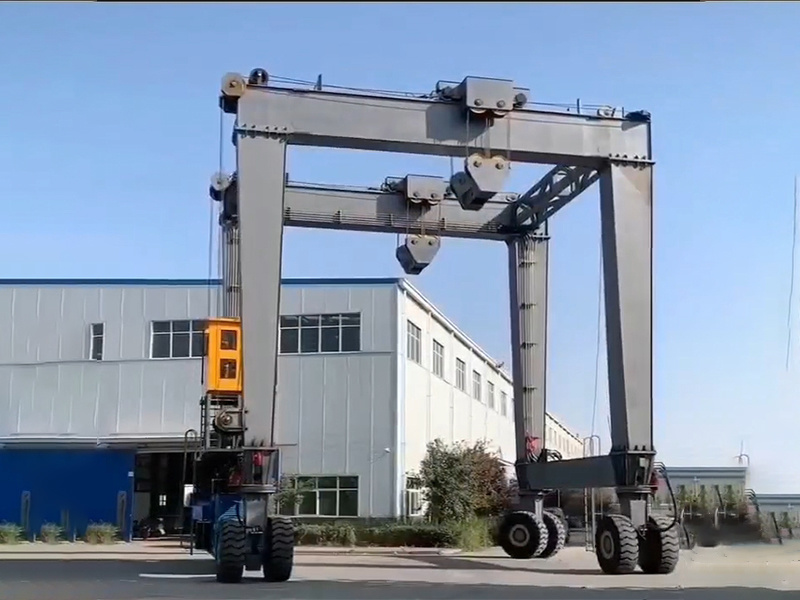Henan Aifite Intelligent Equipment Co., LTD.
Crane Buffer
Classification:
Product Introduction
**Crane Buffer**
In the world of heavy lifting and construction, cranes play a crucial role in moving large and heavy materials. However, the operation of cranes comes with inherent risks, especially when it comes to the safety of both operators and nearby workers. One of the critical components that enhance the safety and efficiency of crane operations is the crane buffer. This article will delve into the significance of crane buffers, their types, applications, and the impact they have on the industry.
Crane buffers serve as shock absorbers, designed to mitigate the effects of sudden impacts during crane operations. They are essential for protecting both the crane itself and the load being lifted. When a crane lowers or raises a load, the abrupt changes in momentum can cause stress not only on the crane's structure but also on the materials being handled. By employing crane buffers, operators can minimize these stresses, ensuring a smoother operation and reducing the likelihood of accidents.
There are several types of crane buffers, each designed for specific applications and environments. The most common types include hydraulic buffers, spring buffers, and rubber buffers.
Hydraulic buffers utilize hydraulic fluid to absorb shock. When a load impacts the buffer, the fluid is compressed, dissipating energy and preventing damage to the crane. This type of buffer is particularly useful in scenarios where heavy loads are frequently lifted and lowered, as they can handle significant amounts of energy.
Spring buffers, on the other hand, use mechanical springs to absorb shock. These buffers are often simpler in design and can be more cost-effective than hydraulic options. They are commonly used in environments where loads are not excessively heavy, making them suitable for smaller cranes or in less demanding applications.
Rubber buffers provide another alternative, utilizing the elasticity of rubber to absorb shock. They are often used in situations where noise reduction is also a concern, as rubber can help dampen sound generated during impact. Rubber buffers are particularly popular in construction sites located near residential areas, where noise pollution can be a significant issue.
The application of crane buffers extends beyond just protecting equipment. They also enhance operational safety. By minimizing the impact forces during lifting and lowering, crane buffers reduce the chances of load slippage or dropping, which can have catastrophic consequences. Moreover, with less wear and tear on the crane, the overall lifespan of the equipment can be extended, leading to lower maintenance costs and increased efficiency.
In addition to their safety benefits, crane buffers also contribute to operational efficiency. With smoother transitions during load handling, operators can work more quickly and effectively. This efficiency is particularly crucial in large construction projects where time is of the essence. By reducing downtime caused by equipment failure or accidents, crane buffers can significantly enhance productivity on the job site.
Moreover, the implementation of crane buffers can lead to compliance with safety regulations. Many industries are governed by strict safety standards that require the use of protective measures to ensure the safety of workers. By incorporating crane buffers into their operations, companies can not only protect their workers but also avoid potential legal issues stemming from accidents or injuries.
Despite their numerous benefits, it is essential to remember that crane buffers are not a one-size-fits-all solution. The choice of buffer type should be based on the specific requirements of the operation, including load weight, frequency of use, and environmental conditions. Additionally, regular inspections and maintenance of crane buffers are crucial to ensure their effectiveness. Over time, buffers can wear out, and their ability to absorb shock may diminish. Therefore, operators must remain vigilant and proactive in maintaining their equipment.
In conclusion, crane buffers are an integral component of safe and efficient crane operations. They serve to protect both the crane and the loads being lifted, enhance operational safety, and contribute to overall efficiency on construction sites. With various types of buffers available, operators can choose the best option for their specific needs, ensuring compliance with safety regulations and minimizing risks. As the construction industry continues to evolve, the importance of crane buffers will only increase, making them an essential investment for any organization involved in heavy lifting and material handling. By prioritizing safety and efficiency through the use of crane buffers, companies can pave the way for a more secure and productive future in the construction sector.
Keyword:
Feedback
Leave a message online and get the product quotation free of charge. We will arrange the specialist to contact you as soon as possible.







